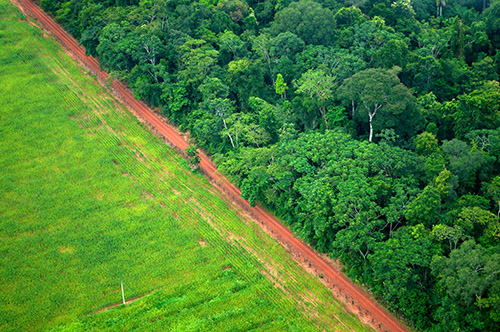Find out the latest in forest news in this week’s Forest Digest!

Photo by Kate Evans/CIFOR
- Status of forests is ‘dire’ as world marks 2017 Earth Day — Los Angeles Times
According to the World Bank development indicators from 2016, the world has lost 1,000 football fields of forests every hour since 1990. That’s 1.3 million square kilometers of forest, which is an area larger than South Africa. Especially with Earth Day coming up tomorrow, we should emphasize the message that forest protection is more critical than ever. - Denver Trees Are Turning Green, But Also Blue — CBS Denver
Volunteers are in the process of painting trees in downtown Denver blue (of course, using environmentally safe colorant). The art project, Blue Trees, aims to inspire a community conversation about deforestation. Over the next six weeks, the volunteers will color 150 trees in Denver’s theater district. - California Democrats prepare to battle GOP over Endangered Species Act — The Mercury News
House Republicans recently held a hearing to make the case that the Endangered Species Act needed serious improvements and hindering efforts to repair dams, roadways and bridges. At the same time, lawmakers in California have been working to strengthen their state’s protections for endangered species, should they lose federal protection. The California Democrats are currently moving the California Environmental, Public Health, and Workers Defense Act of 2017 through the Legislature. This act would toughen environmental regulations signed by Nixon in the 70s. - Prescribed forest fire frequency should be based on land management goals — Science Daily
In a 68-year study, researchers at the University of Missouri studied forests subjected to different frequencies of fire to determine the effects that fire can have on oak forests over long period of time. They found that the frequency of prescribed forest fires should be determined based on the long-term goals of land managers. - The trees that make Southern California shady and green are dying. Fast. — Los Angeles Times
The trees that shade, cool and feed Southern Californians are dying so fast that within a few years, the region may look nothing like it does now. Greg McPherson, a supervisory research forester with the U.S. Forest Service, estimates that even just one type of insect, the polyphagous shot hole borer beetle, could kill up to 27 million trees in the area. That’s roughly 38% of the 71 million trees in the 4,244 square mile urban region with a population of about 20 million people.